While it might be 8 for some and 15 for others, the term “10 Essentials” relates, generally, to survival gear you should have packed in your daypack, car, fanny pack, backpack, boat or ATV.
Fundamentally, your “10 Essentials” comes down to what you’ll need to survive a night or two in the woods or on the water if you’re stranded. There are too many awful stories of folks who were unprepared for life in the woods and succumbed to hypothermia. That’s generally the culprit, exposure.
To survive, you need to stay warm, hydrated and fed. Pretty simple right? Not really, because you’ll need the knowledge and gear to overcome the cold and weather.
For example, if a compass is something you include in your 10 essentials, that’s great, but you’ll need a map and the knowledge on how to use it. In fact, with everything you include in your kit you’ll need the knowledge, and hopefully experience, on how to use it.
For instance, packing a grommeted tarp without ever having used one as a tent or lean-to will have the odds stacked solidly against you. Same goes for making fire. At the Washington and Pacific Northwest Sportsmen’s Shows survival expert Brett Stoffel shows attendees how to make fire. Using a ball of cotton, some Vaseline and “match stick”, which is a magnesium fire block with a starting blade that when struck together kicks out showers of fire-starting sparks, Brett gets a flame going quickly. You can be told how to do it but until you actually make fire it’s a mystery.
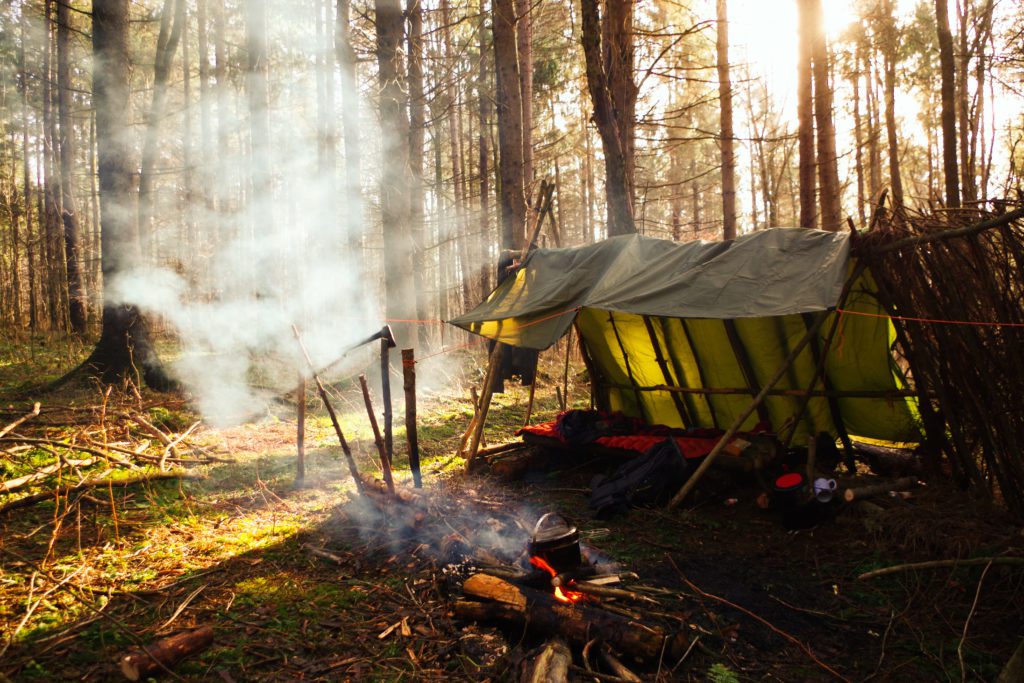
Learning how to make shelter and fire is a potentially life-saving outdoor skill.
Over the summer, some friends had decided they’d had enough being cooped up and decided on an ambitious road trip. They drove into Northern California to the coast, up the coast into Oregon then across some sketchy partially paved roads back towards I-5. It never dawned on them to have some kind of survival kit packed. They took roads that had stranded others, some for days and too far to walk out if they had any problems along the way. It’s exactly these times when fate rears its ugly head and things go bad.
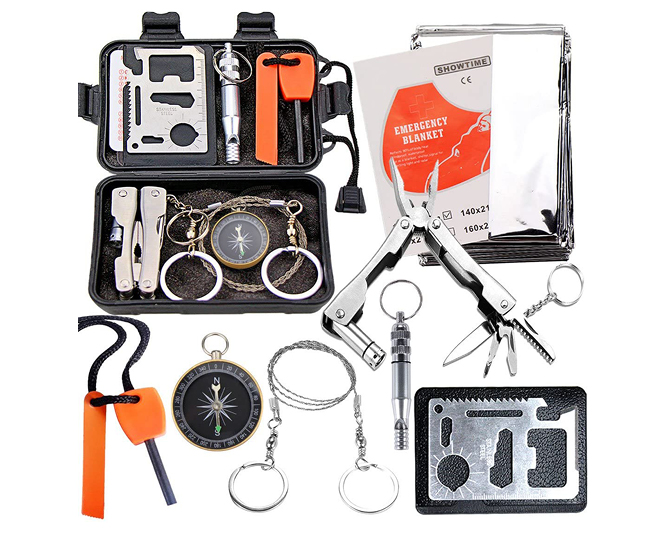
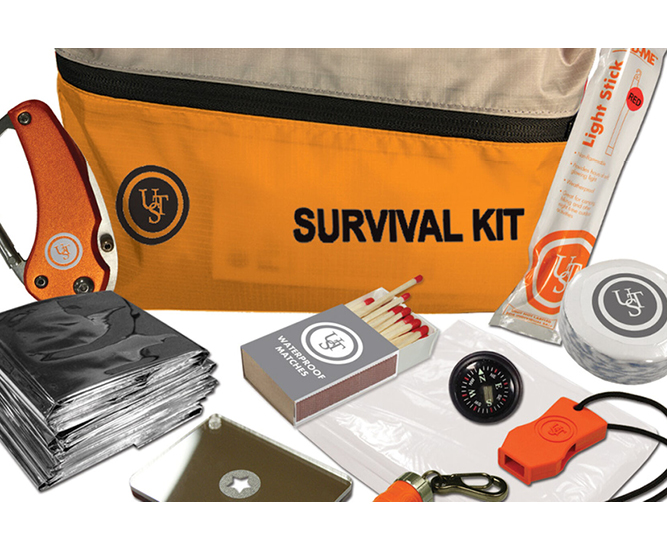
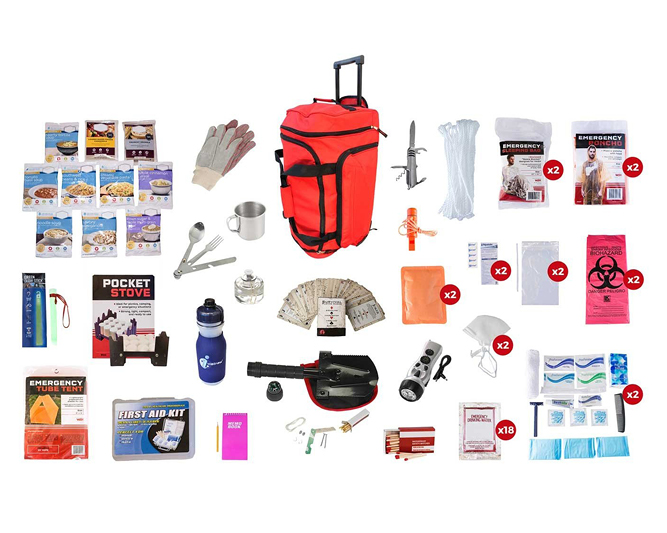
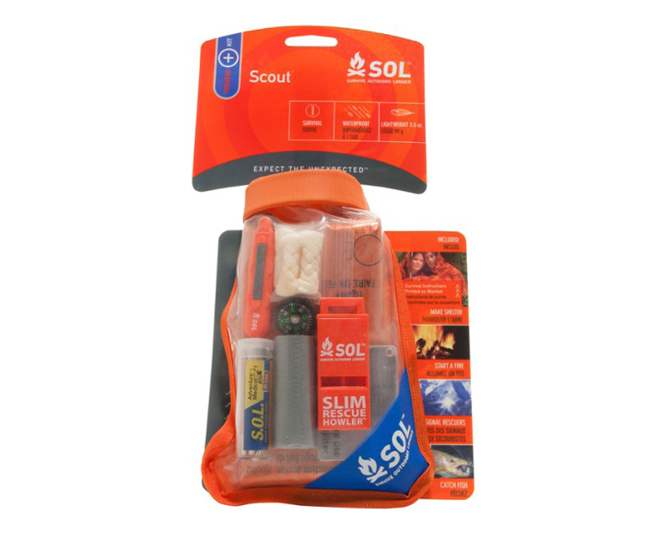
You can purchase complete survival kits. Double check to make sure they have what you need and are suited to your needs whether for use in a car, boat, day pack or ATV.
Fortunately, for them, their trip was uneventful. For others, the exact same trip has been deadly.
It’s precisely these times when being prepared can be the difference between life and death. Anyone who ventures into the backcountry, either by car, on foot or by boat should always be equipped with their 10 Essentials or some kind of survival kit to see them through a couple of days of weather.
When it happens you’ll need to make shelter, stay warm, drink water and eat. In that order.
A fully charged cell phone is certainly a help, particularly if you can get to high ground that’s unobstructed…you may be able to get a signal. A spare battery provides added comfort.
A sharp knife, water purifier or purification tablets, metal cup, wire saw, whistle, LED flashlight, at least 100’ of nylon cord, basic first aid items, a few nutrition bars and thermal blanket (very thin/lightweight) are other essentials to add.
Then come the luxury items when weight isn’t an issue, blankets, more rope, cooking gear, tarps, sleeping bags, hatchet, freeze-dried food items, bow saw, a gallon or more of water, GPS, several lighters and plenty of paper and kindling for starting a fire.
Again, the key is shelter, fire/warmth, clean water and food.
And equally essential to all this is the knowledge on how to use it. Where to find dry wood, how to “make water”, how to use your GPS or compass and not only how to make a shelter but having actually done it. This all combines to create your menu of outdoor skills that you can continue to practice and rely on your entire life.
I’d had the pleasure of attending the birthday of an 80 year old man who had spent his life helping those younger than him hone their outdoor skills. On his 80th birthday he jumped up on a picnic table with his trusty bow, stick and block and proceeded to make fire…the old fashioned way. He wanted to show us all he could do it in 60 seconds. He didn’t…it only took him 30 seconds before he got his tinder going! Decades and decades of practice developing a skill relatively few in the world are capable of doing was his answer. The very same man years earlier had developed a walking stick made from an aluminum tube that he’d loaded with survival gear…it was genius!
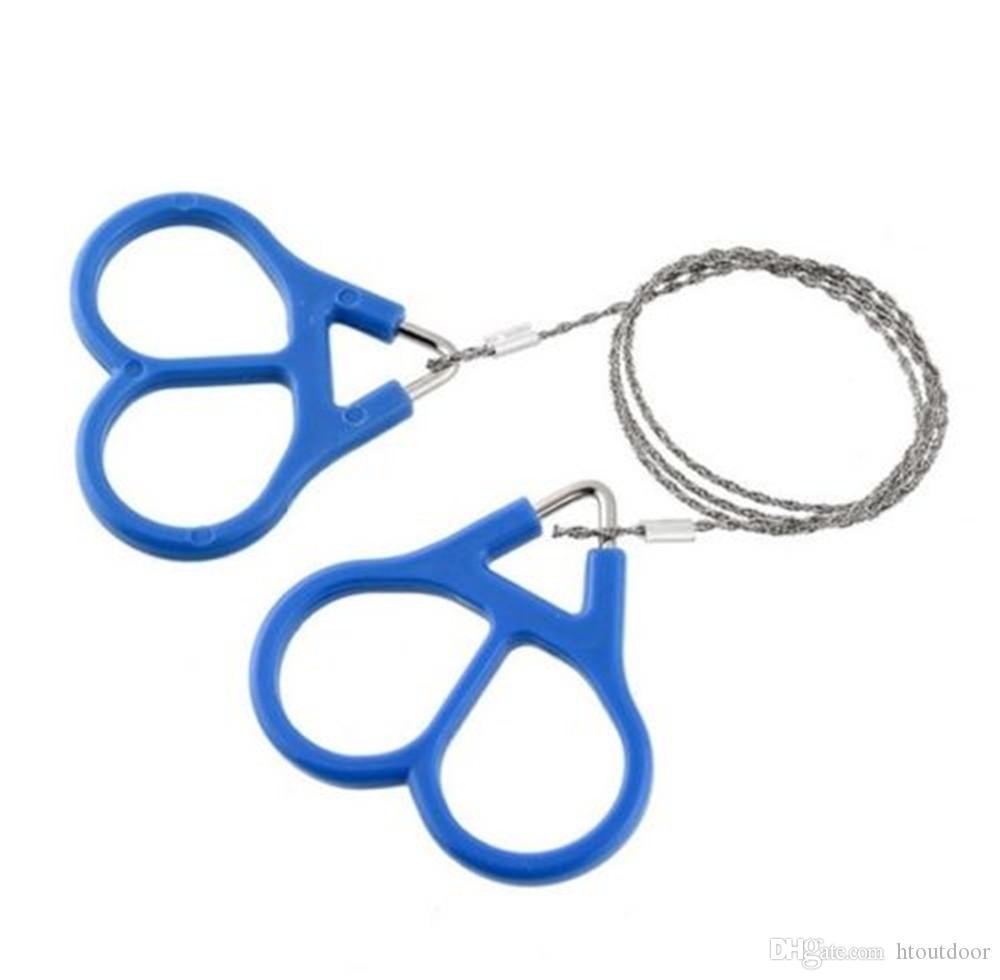
Small, lightweight, easy-to-use and effective, a wire saw is an often overlooked but important item to include in your 10 essentials kit.
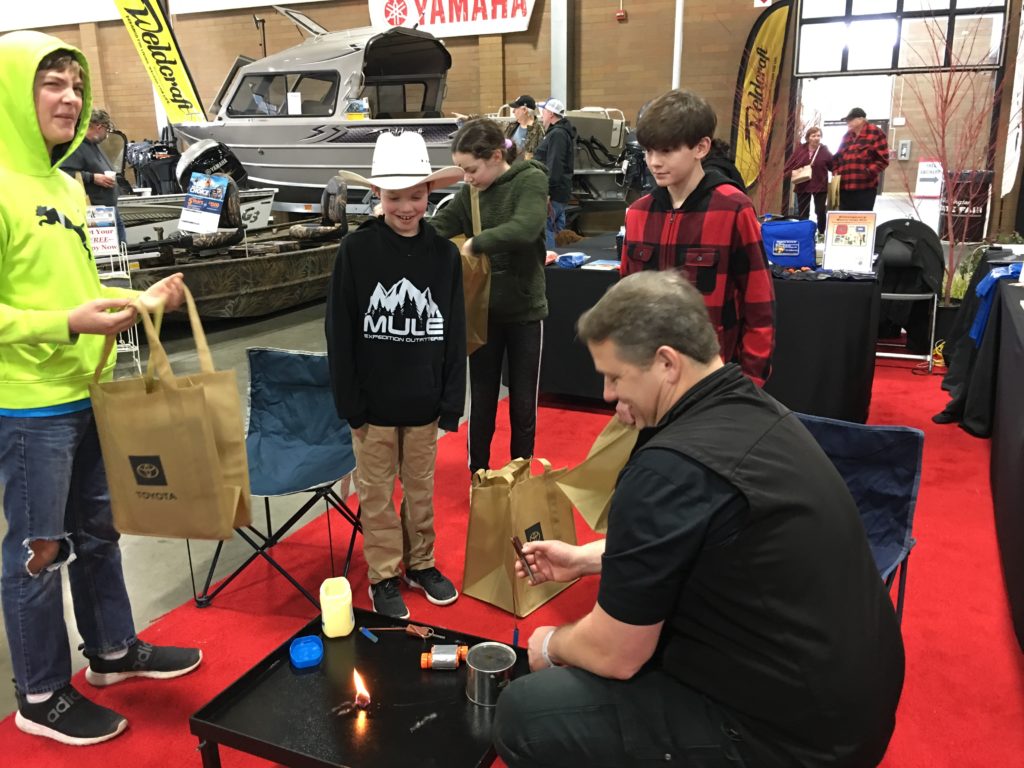
Survival expert Brett Stoffel shows a group of kids how to make fire using cotton balls, Vaseline, a match stick and striker.
Skilled outdoors folk know how to stay dry, warm, fed and hydrated…their life depends on it and they practice it.
Of course, attending Brett Stoffel’s survival seminars at the Sportsmen’s Show will give you lots of ideas and information on what to do and how to do it. In fact, people that have taken his seminars credit those sessions with saving their lives when they themselves have been lost and had to rely on the information Brett provided.
This fall or maybe sometime next year, commit to honing your outdoor skills. Take a tarp, fire starter, water purifier and some freeze-dried food and make a weekend of it. If you do it right you’ll stay warm and dry in a sleeping bag at night and out of the weather. During the day you can work on making a lean-to, getting your fire going and building it up and getting comfortable. It’s a fun thing to do for a weekend but more importantly you’ll be building knowledge and experience that one day may very well save your life.